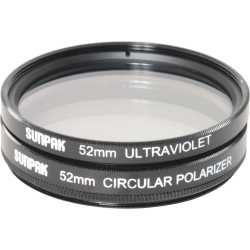>>3938116>How useful are them for wildlife and protraits?Very.
Wildlife I guess includes foliage in most cases, and foliage is very highly reflective. A polariser will turn foliage into a more saturated, warmer green, getting rid of the reflections that usually make foliage look washed out and desaturated in direct sun.
If the wildlife is in a pond or lake etc., and you shoot from the ground (i.e. not underwater), then a polariser is essential.
Same goes for portraits, especially in colour. You'll get more even, warmer skin, without bright patches where it reflects the sun, a look which is usually flattering. It obviously works on B&W too, but in B&W you might want to keep the reflections cause it works for the composition.
>Are there benefits to buying an expensive filter as opposed to a $10 one from amazon?Not hugely so, other than coatings that help with flare. Other things an expensive filter will give you is a brass ring (instead of aluminium - i.e. smaller chance of bending or getting stuck on the lens), and maybe a thinner ring for use with wideangles (to avoid vignetting).
Around $20-30 is the sweet spot for bang for buck, get a basic Hoya multicoated one (not the fancy Nano Super Positron Beam Electrocoated bullshit).
>Would you buy step-up diameter rings and a large filter or separate filters for many lenses?This sounds like a good idea on paper, but in practice it's really inconvenient. Plus you're paying huge prices if you get the biggest possible size to cover all your lenses.
Just get the filter size of your most used lens(es), and go from there. If you see another lens ends up being used quite a bit with whatever filter, it's worth getting a second filter for that one.
For less used lenses, a step up/down ring will do. You can get a full set of step up rings for a tenner or so, and it's good to have anyway.

